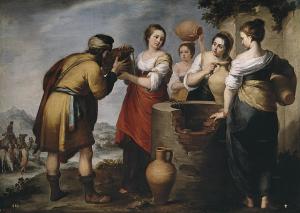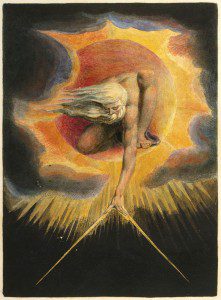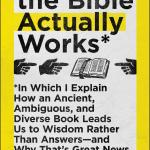 In the final chapter (actually an epilogue) of The Bible in a Disenchanted Age: The Enduring Possibility of Christian Faith, Walter Moberly digs biblical literacy and a Christian privileging of the bible. In his discussion he uses the example of camels, harking back to news reports several years ago (2014) that camels provide a serious sticking point for Christians. Moberly refers specifically to a blog at the Guardian: The Old Testament’s made-up camels are a problem for Zionism. Camels are mentioned in Genesis although there is no evidence for domesticated camels in the region until a much later date (ca. 930BC). In fact, I was asked about the controversy and posted some thoughts back when it was hot. You can see the original post here if interested: The Mighty Mysterious Camel.
In the final chapter (actually an epilogue) of The Bible in a Disenchanted Age: The Enduring Possibility of Christian Faith, Walter Moberly digs biblical literacy and a Christian privileging of the bible. In his discussion he uses the example of camels, harking back to news reports several years ago (2014) that camels provide a serious sticking point for Christians. Moberly refers specifically to a blog at the Guardian: The Old Testament’s made-up camels are a problem for Zionism. Camels are mentioned in Genesis although there is no evidence for domesticated camels in the region until a much later date (ca. 930BC). In fact, I was asked about the controversy and posted some thoughts back when it was hot. You can see the original post here if interested: The Mighty Mysterious Camel.
Moberly suggests that the controversy, and the claim that camels are a serious problem, demonstrates an unfortunate level of biblical illiteracy. First, the absence of camels was not a new discovery – he notes a reference in a book ca. 1949 commenting that the absence of evidence for domesticated camels may indicate that the references in Genesis are anachronistic. It made the news in 2014, but has been a subject of discussion and investigation for many decades. But more than this the whole tenor of the discussion is on the wrong foundation. Moberly suggests three possible approaches to camels in Genesis. The intent isn’t to resolve the issue, but “to give some sense of the ways it can be responsibly tackled without resorting to sensational claims about “error in the Bible.” (p. 185)
1. Perhaps the mention of camels is not anachronistic – but camels may have been a rarity with a wealthy man having a few as a prestige symbol. This is the solution suggested by Nahum M. Sarna in his JPS Torah Commentary: Genesis originally published in 1989.
A solution to the problem may perhaps be sought along other lines. Certain bilingual Sumerian-Akkadian lexical texts from Mesopotamia equate a domesticated animal called “a donkey-of-the-sealand” with a dromedary, thus proving a knowledge of the latter in southern Mesopotamia in Old Babylonian times (ca. 2000-1700 B.C.E.). Moreover, the scribes knew to differentiate between the dromedary and the Bactrian camel, and a Sumerian text from that period mentions the drinking of camel’s milk. The original habitat of the camel seems to have been Arabia. It is likely that the domesticated camel at first spread very slowly and long remained a rarity. A wealthy man might aquire a few as a prestige symbol for ornamental rather than utilitarian purposes. This would explain their presence in Abraham’s entourage, their nonuse as beasts of burden, and their special mention in situations where wealth and honor need to be displayed, as for instance, in Genesis 24. (p. 96)
This provides a potential solution, camels were rare but not unknown and used only for special occasions. Moberly notes that “although conjectural it is a plausible conjecture.” (p. 184)
 2. Anachronism is commonplace in storytelling. Adding some local color from the day and time of the audience is not something that would have caused any significant concern as stories were passed down from generation to generation. It doesn’t falsify the underlying biblical story any more than the placing of biblical characters in anachronistic clothing in European art falsifies the story. The intended audience understands the story and its meaning. The image to the right is Rebecca and Eliezer by Bartolomé Esteban Murillo ca. 1660. (Note the camel in the background.)
2. Anachronism is commonplace in storytelling. Adding some local color from the day and time of the audience is not something that would have caused any significant concern as stories were passed down from generation to generation. It doesn’t falsify the underlying biblical story any more than the placing of biblical characters in anachronistic clothing in European art falsifies the story. The intended audience understands the story and its meaning. The image to the right is Rebecca and Eliezer by Bartolomé Esteban Murillo ca. 1660. (Note the camel in the background.)
3. The story may be intentionally set in an earlier time and contain anachronistic elements arising from a lack of knowledge of the earlier time. The story of Job contains such elements – it is set in an earlier time to explore issues contemporary to the audience. While this is reasonable for Job (wisdom literature, a thought experiment rather than a history) it is more troubling for the patriarchal narrative in Genesis.
Error and Trust. The sensational claims about error in the Bible … we see them cropping up with some regularity … miss the point. The important concept is not that the bible is inerrant, but that it is trustworthy.
Put briefly: “trustworthy” is a richer, deeper, and more appropriate term for (would-be) believers to apply to the Bible than “inerrant.” It expresses the self-identifying stance of the Christian churches that both their thought and their practice are appropriately rooted in the content of the Bible. Trustworthiness has to to with the existential openness that is necessary for finding God, or being found by God, in and through the pages of the Bible. The notion of trustworthiness is also robust, as it is not a matter of all or nothing or of slippery slopes. … Importantly, the real problem for trust is not error but deception. It is deception, rather than error, that entails substantive moral and spiritual failure such as makes trust inappropriate. (pp. 186-187)
Frankly, the question of camels in Genesis has nothing to do with the trustworthiness of the message of the Bible. One of the fallacies of our modern approach to the biblical text is the concept that what really matters more than anything else is historical reliability, not in the general overarching story, but in the myriad of details in the text. If it reads to us like history (as we understand it), it must be history (and our kind of history at that). Moberly also suggests that we are comfortable with literary conventions of our day, but tend to be unnecessarily rigid in our approach to scripture, perhaps because we are unfamiliar and uncomfortable with conventions of other times and places. One of the strengths of CS Lewis and his approach to Christian faith was his comfort with literary genres and conventions and their power to convey truth. An awareness of genre and convention allows us to recognize “which questions a text will and will not constructively sustain, and [determine] the uses to which a text is and is not best put.” (p. 194)
Genesis 24 is about the faithfulness of God providing a wife for Isaac from among Abraham’s relatives and the openness of the servant to God’s guidance. It is not about camels. There is nothing inherently problematic with the revelation of God being conveyed in forms and conventions of the original authors and audience. These forms and conventions may not always be self-evident from our 21st century perspective, but this is our problem rather than an intrinsic theological conundrum.
 Returning to Daniel 7 and Matthew 28 (see the earlier posts on Moberly’s book), the most important questions are those such as “Is the deity depicted a construct of the human imagination, or is the deity in fact the living God? Does God ultimately vindicate his persecuted faithful? … Is it important for people to live now in ways that embody those qualities that will ultimately be vindicated?” (p. 196) As Christians we take the Bible seriously on the witness of the church and as a trustworthy revelation of God’s nature, his creation, the vocation and purpose of humans created as his image and likeness, the hope for future vindication and consummation.
Returning to Daniel 7 and Matthew 28 (see the earlier posts on Moberly’s book), the most important questions are those such as “Is the deity depicted a construct of the human imagination, or is the deity in fact the living God? Does God ultimately vindicate his persecuted faithful? … Is it important for people to live now in ways that embody those qualities that will ultimately be vindicated?” (p. 196) As Christians we take the Bible seriously on the witness of the church and as a trustworthy revelation of God’s nature, his creation, the vocation and purpose of humans created as his image and likeness, the hope for future vindication and consummation.
Overall The Bible in a Disenchanted Age: The Enduring Possibility of Christian Faith is well worth reading. It is thought provoking with many interesting insights. Most of us probably won’t agree with Moberly in places – but that isn’t really the point. It will help the careful reader think more deeply about the nature of the Bible and its reception in the church. This can make it a valuable contribution for those wrestling with the nature and purpose of the Bible … and its relevance in a disenchanted age.
Is trustworthy a better adjective than inerrant?
What difference does it make?
If you would like to contact me directly you may do so at rjs4mail[at]att.net.
If interested you can subscribe to a full text feed of my posts at Musings on Science and Theology.
















